Vampyroteuthis infernalis – Vampire Squid
(screenshot from a Monterey Bay Aquarium Research Institute Youtube video)
Placed in its own order (Vampyromorpha; Pickford, 1936) due to the presence of sensory filaments, V. infernalis is a bathypelagic cephalopod that resides in the oxygen minimum zone at depths from 600-800m (Siebel et. al 1998). Their mass-specific metabolic rate is the lowest among all cephalopods. A historical relic as the last living species of the order Vampyromorpha, V. infernalis share characteristics of both octopods and squid (Siebel et. al 1999).
Feeding habits of V. infernais have been studied in situ observations, shipboard observations, stable isotope analysis, and gut sample analysis. These observations show a variety of prey including copepods, shrimps, squids, cnidarians, and marine snow.
V. infernalis was preserved in formalin and the buccal cavity was extracted using forceps. The radulae from this specimen measured at 4.5 mm and 3.75 mm long.
Images from V. infernalis show that this species has a homodont radula with a single cusp on all seven teeth, along with marginal plates along both sides of the rows.

Radula of V. infernalis taken by Sam Mejia

Radula of V. infernalis taken by Sam Mejia

Radula of V. infernalis taken by Sam Mejia

Radula of V. infernalis taken by Sam Mejia

Radula of V. infernalis (with some measurements) taken by Sam Mejia

Radula of V. infernalis (with some measurements) taken by Sam Mejia

Radula of V. infernalis (with some measurements) taken by Sam Mejia

Radula of V. infernalis taken by Sam Mejia

Radula of V. infernalis taken by Sam Mejia

V. infernalis taken by Sam Mejia

V. infernalis taken by Sam Mejia

further down the radula of V. infernalis taken by Sam Mejia

further down the radula of V. infernalis taken by Sam Mejia

V. infernalis taken by Sam Mejia

V. infernalis taken by Sam Mejia

V. infernalis taken by Sam Mejia
 end of the radular ribbon of V. infernalis taken by Sam Mejia
end of the radular ribbon of V. infernalis taken by Sam Mejia

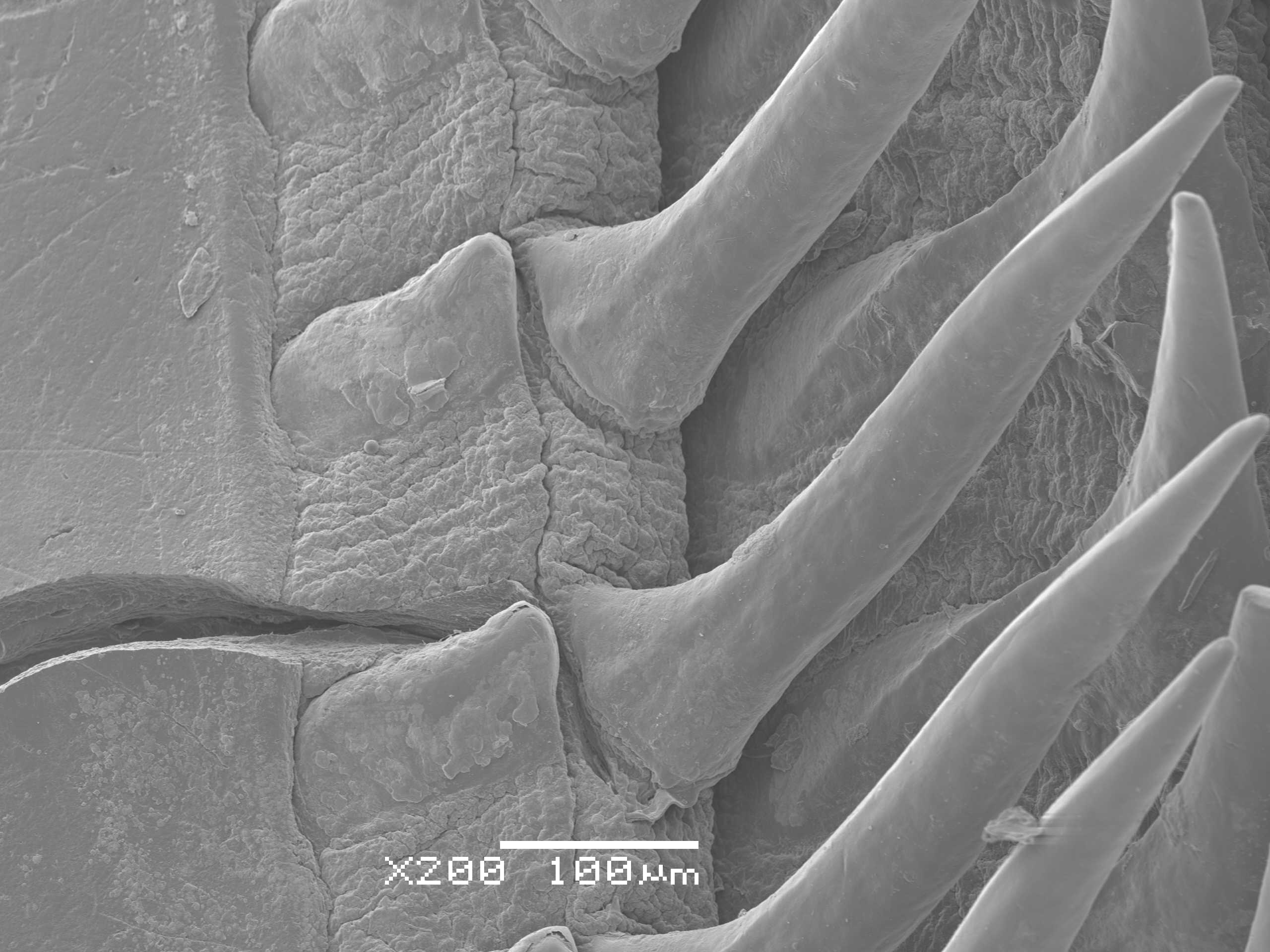
Radula of V. infernalis (close up of marginal plate and marginal tooth) taken by Sam Mejia

Radula of V. infernalis taken by Sam Mejia

Rachadian tooth (middle) with lateral teeth of V. infernalis taken by Sam Mejia

Radula of V. infernalis (close up of marginal plate, marginal tooth, and lateral teeth) taken by Sam Mejia

Radula of V. infernalis (with marginal tooth torn partially off) taken by Sam Mejia
Euprymna scolopes – Hawaiian Bobtail Squid


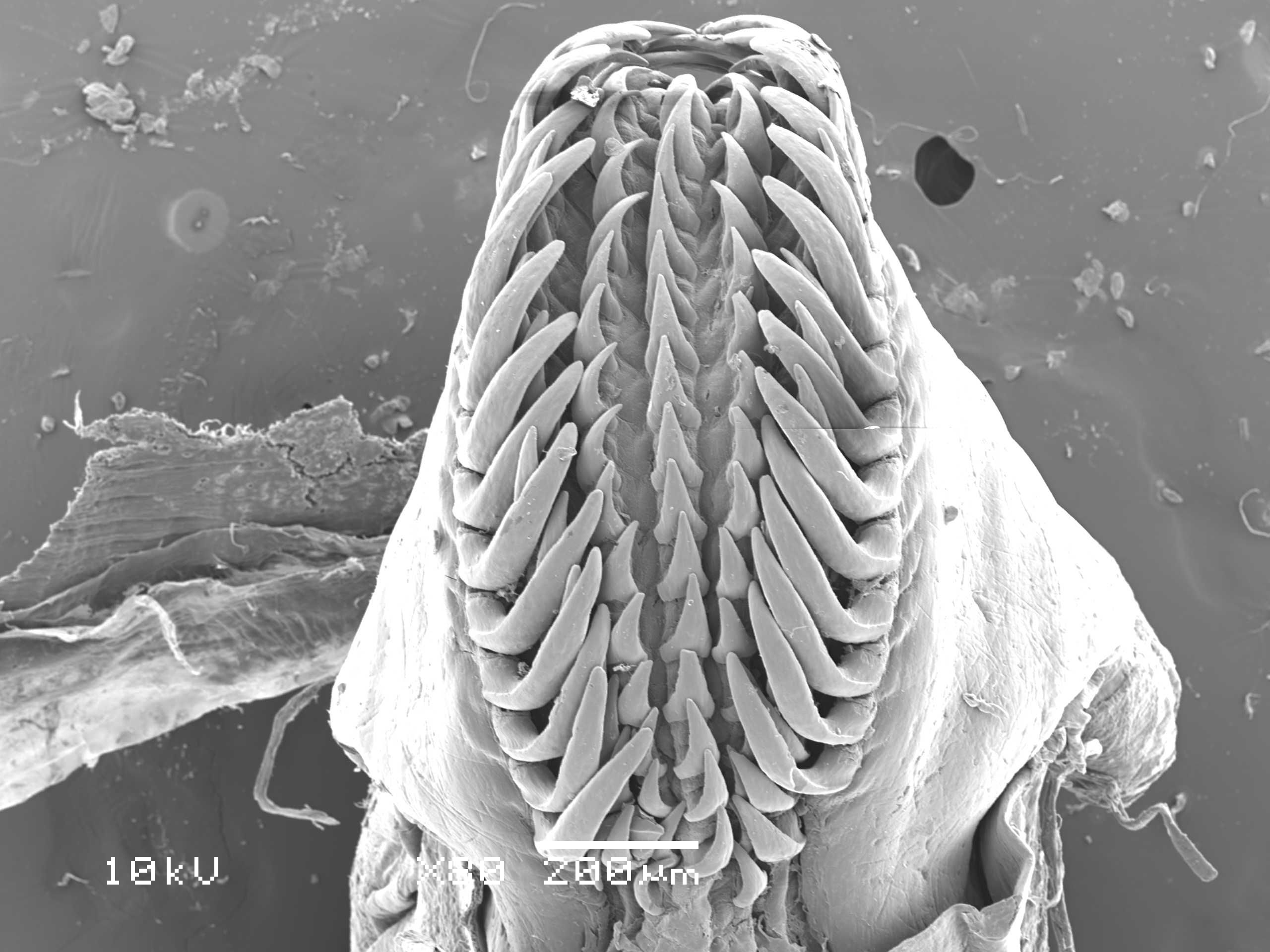




Radula of E. scolopes (with some measurements) taken by Sam Mejia

Radula of E. scolopes (with some measurements of space between teeth) taken by Sam Mejia
Sepia bandensis – Dwarf Cuttlefish


-Photo by Matthew T. Ross–
S. bandensis is known to prey on mysid shrimp, crabs, amphipods, and fish. Observed in coastal shallow waters, found over coral reefs and sand (Ross 2010).
Images from S. bandensis show that this species has a homodont radula with a single cusp on all seven teeth, with no distinctive marginal plates (but possibly marginal rows) along both sides of the rows.

Radula of S. bandensis taken by Sam Mejia

Radula of S. bandensis taken by Sam Mejia

Radula of S. bandensis taken by Sam Mejia

Radula of S. bandensis (with some teeth measurements) taken by Sam Mejia
S. bandensis from Denise Whatley from Tonmo

Radula of S. bandensis taken by Sam Mejia
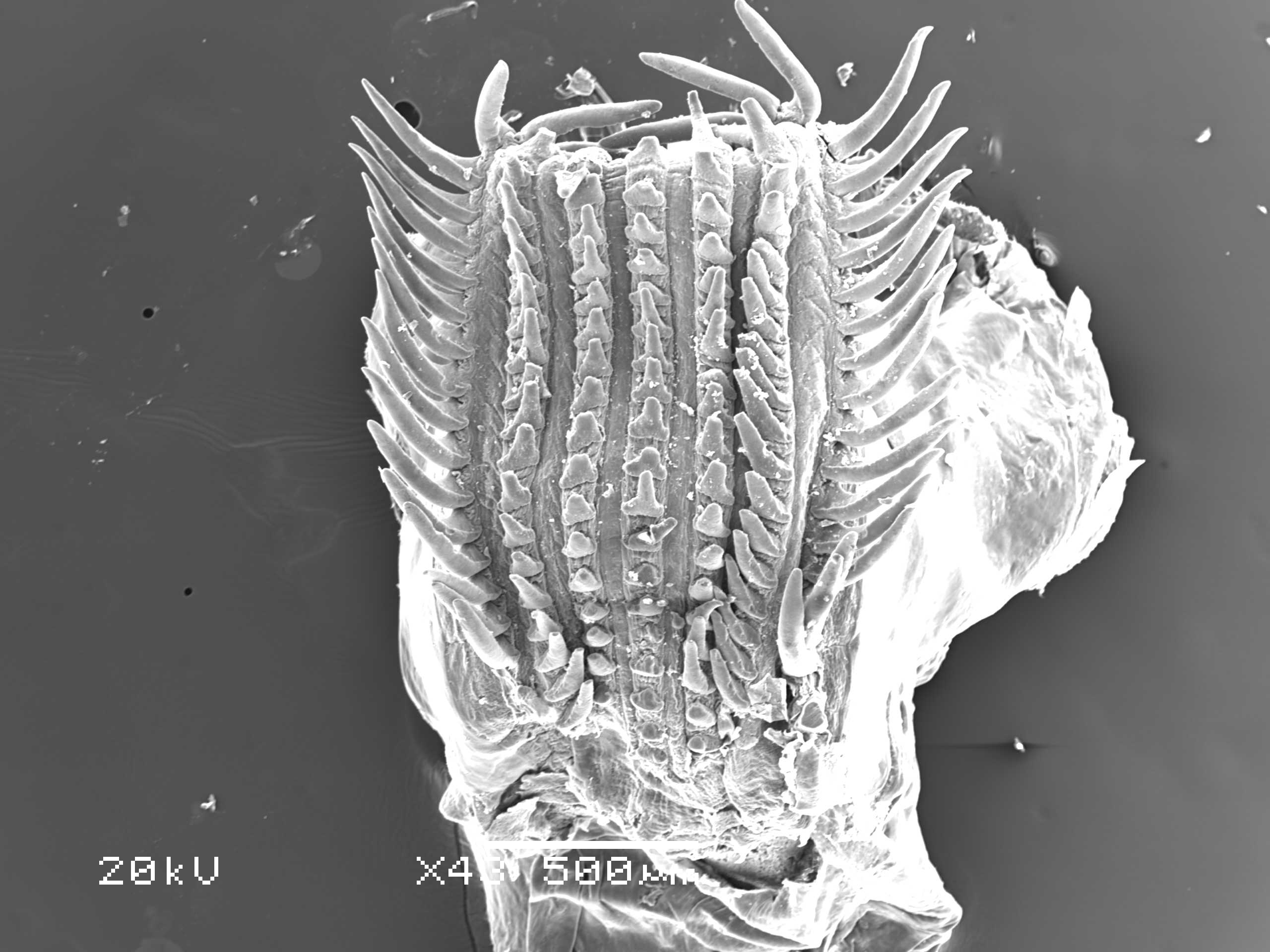
Radula of S. bandensis taken by Sam Mejia

Radula of S. bandensis taken by Sam Mejia

Radula of S. bandensis taken by Sam Mejia

Radula of S. bandensis taken by Sam Mejia

Radula of S. bandensis taken by Sam Mejia
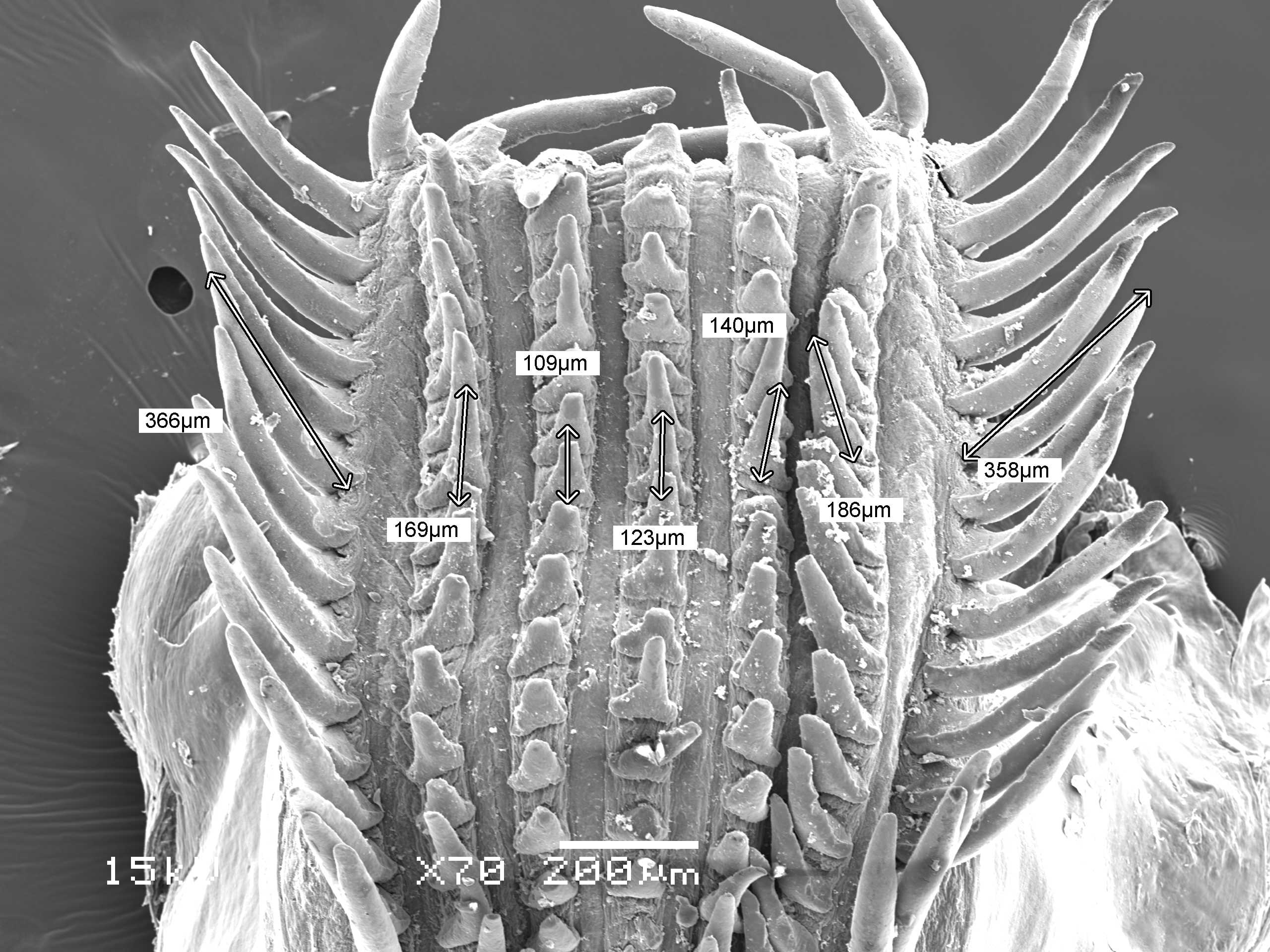
Radula of S. bandensis (with some measurements) taken by Sam Mejia

Radula of S. bandensis (with some measurements) taken by Sam Mejia
Sepia officinalis – Common cuttlefish

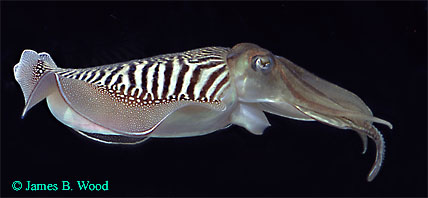
In an experiment where 522 specimen were caught off the coast of Algarve, Portugal, S. officinalis had the prey of 49 different species belonging to six taxa (Bivalvia, Cephalopoda, Crustacea, Gastropoda, Polychaeta and Teleostei). For smaller specimen, crustaceans are a big appeal due to weight, where larger specimen had more fish contents in their stomach. Seasonal differences in diet were apparent and may influenced size of the cuttlefish (Alves 2006).
Images from S. officinalis show that this species has a homodont radula with a single cusp on all seven teeth, with some kind of marginal plate or marginal along both sides of the rows.

Radula of S. officinalis taken by Sam Mejia

Radula of S. officinalis taken by Sam Mejia

Radula of S. officinalis taken by Sam Mejia

Radula of S. officinalis taken by Sam Mejia

Radula of S. officinalis (with some measurements) taken by Sam Mejia
Nautilus pompilius – Chambered Nautilus
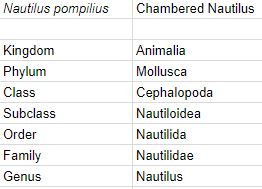

Images from N. pompilius show that this species has a homodont radula with a single cusp on all teeth, with two rows of marginal plates along both sides of the rows. There are a total of 13 elements present.
 Figure. Radula of Nautilus pompilius. Drawing modified from Naef (1923).
Figure. Radula of Nautilus pompilius. Drawing modified from Naef (1923).

Radula of N. pompilius taken by Sam Mejia

Radula of N. pompilius taken by Sam Mejia

Radula of N. pompilius taken by Sam Mejia

Radula of N. pompilius taken by Sam Mejia
(close up of the rachadian tooth with smaller lateral teeth besides it)

Radula of N. pompilius taken by Sam Mejia
(close up of marginal teeth and marginal plates)

Radula of N. pompilius (with some measurements) taken by Sam Mejia
Sepioloidea lineolata – Striped pyjama squid

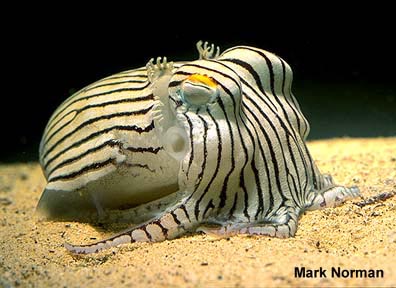
Images from S. lineolata show that this species has a homodont radula with a single cusp on all seven teeth, with some kind of marginal plate or marginal along both sides of the rows.

Radula of S. lineolata taken by Sam Mejia

Radula of S. lineolata taken by Sam Mejia

Radula of S. lineolata taken by Sam Mejia
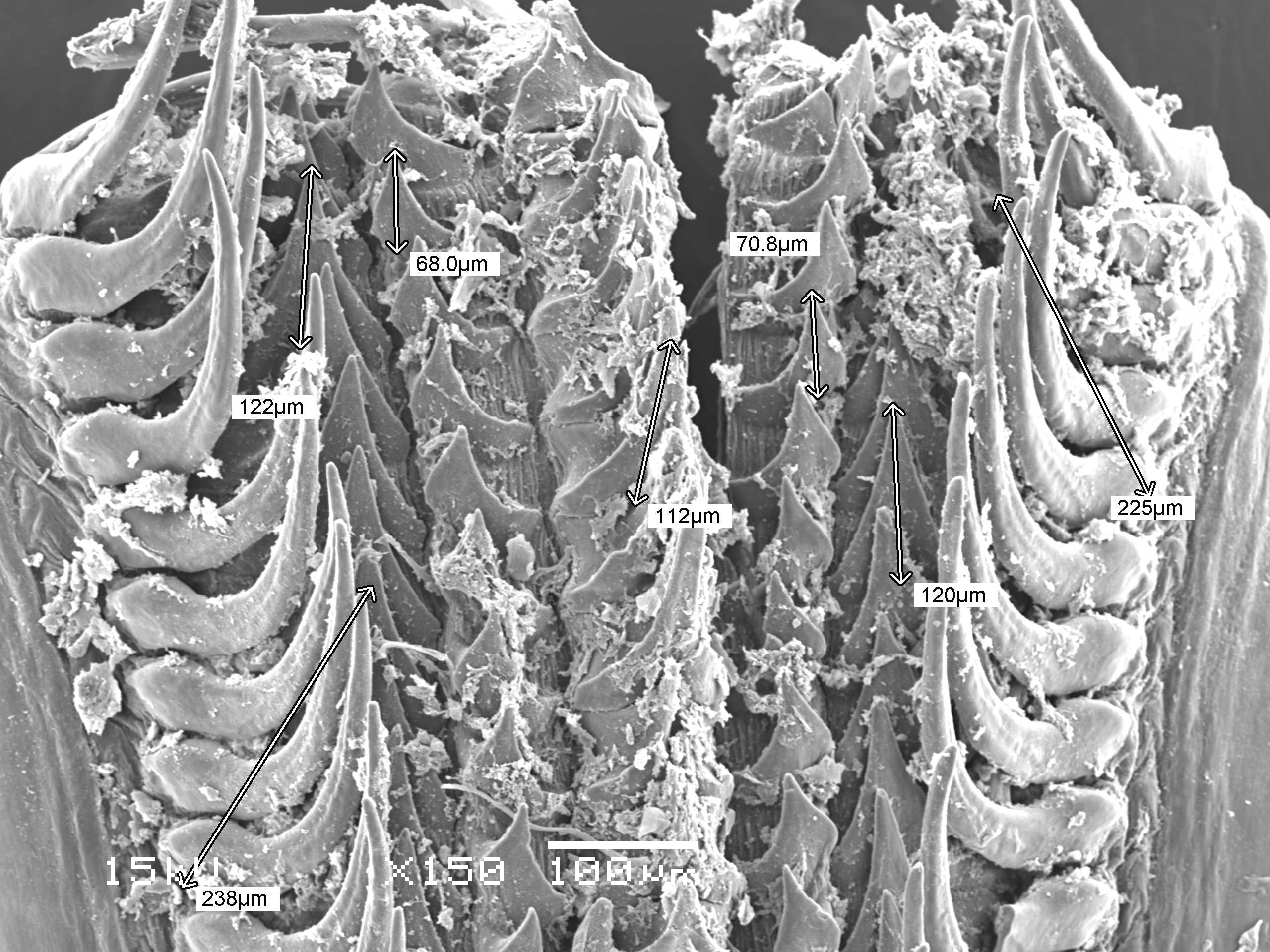
Radula of S. lineolata (with some measurements) taken by Sam Mejia
Metasepia pfefferi – Flamboyant Cuttlefish

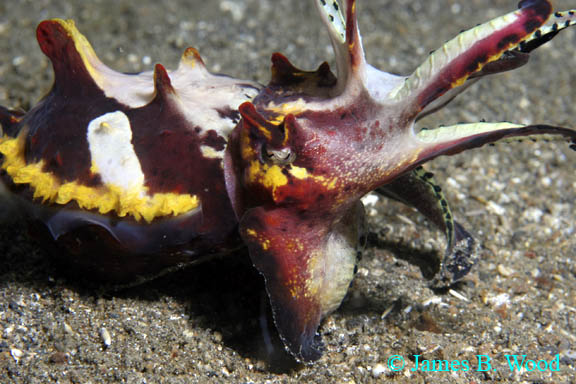
Images from M. pfefferi show that this species has a relatively homodont radula with a single cusp on 5 teeth and possibly 2 cusps on both marginal teeth, with possible marginal plates along both sides of the rows.
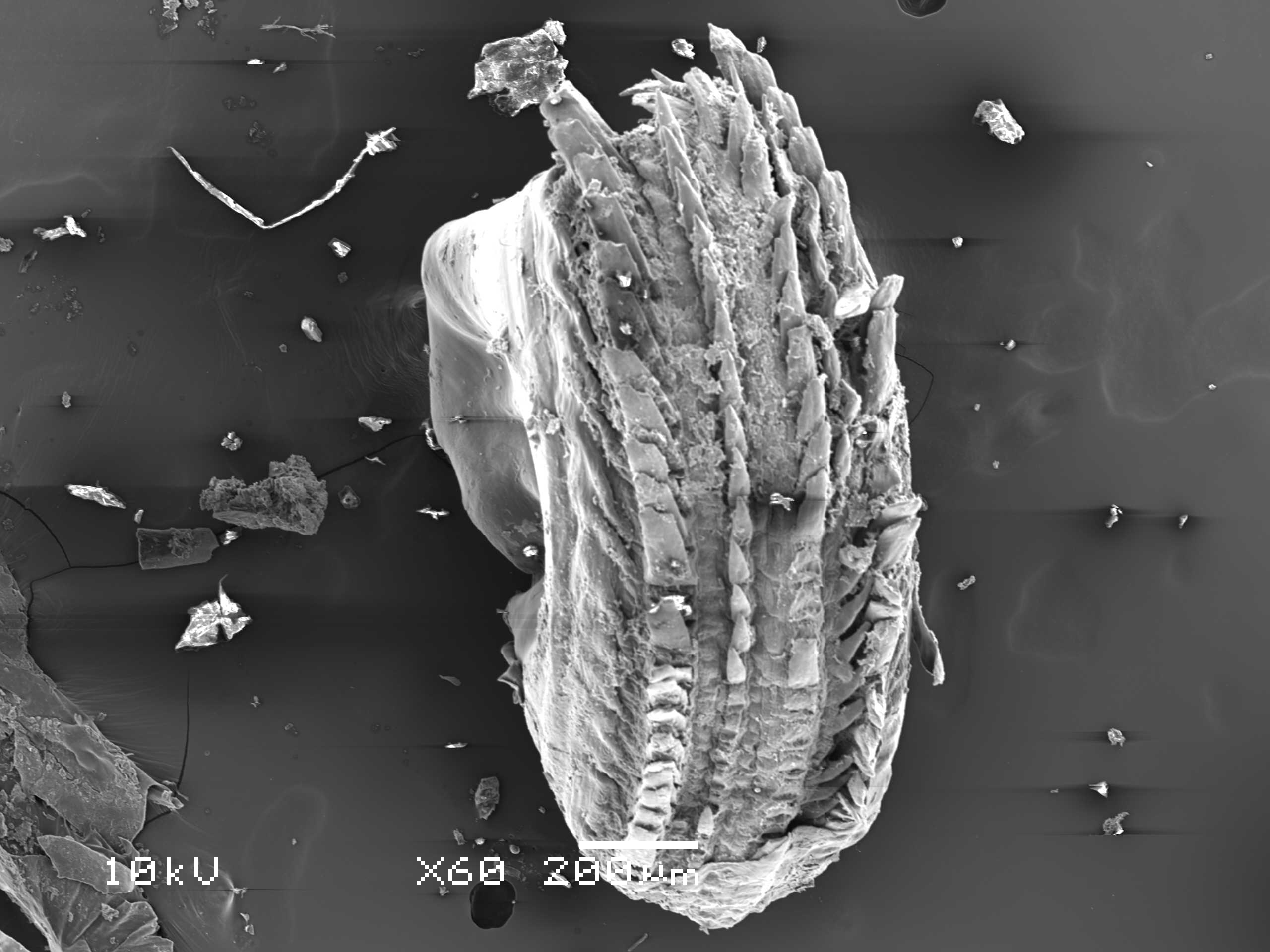
Radula of M. pfefferi taken by Sam Mejia

Radula of M. pfefferi taken by Sam Mejia

Radula of M. pfefferi taken by Sam Mejia

Radula of M. pfefferi (with some measurements) taken by Sam Mejia

Radula of M. pfefferi (with some measurements) taken by Sam Mejia

Radula of M. pfefferi (with some measurements) taken by Sam Mejia
References
Naef, A. (1921/23). Cephalopoda. Fauna und Flora des Golfes von Neapel. Monograph, no. 35. English translation: A. Mercado (1972). Israel Program for Scientific Translations Ltd., Jerusalem, Israel. 863pp., IPST Cat. No. 5110/1,2.
Tree of Life Cephalopod Radula Authored by Richard E. Young, Michael Vecchione, and Katharina M. Mangold (1922-2003)



